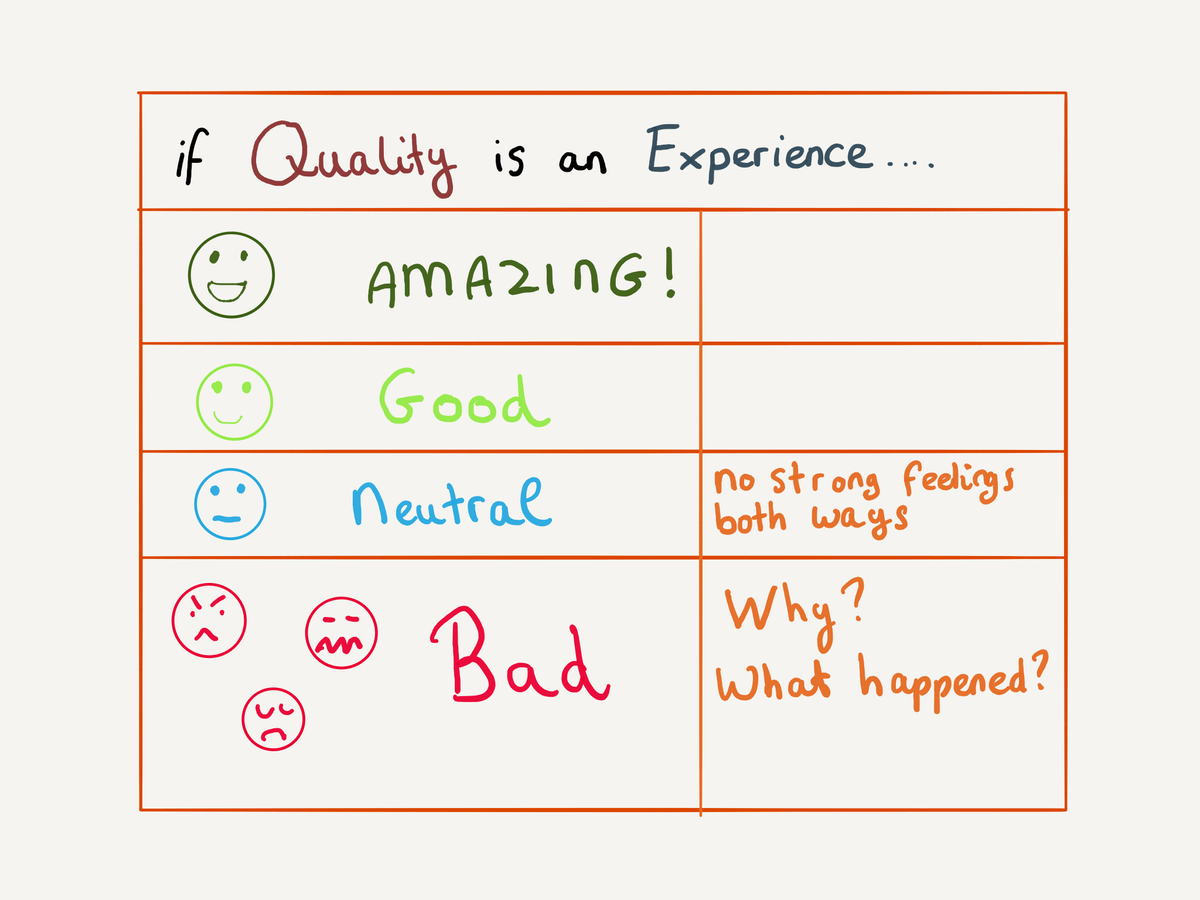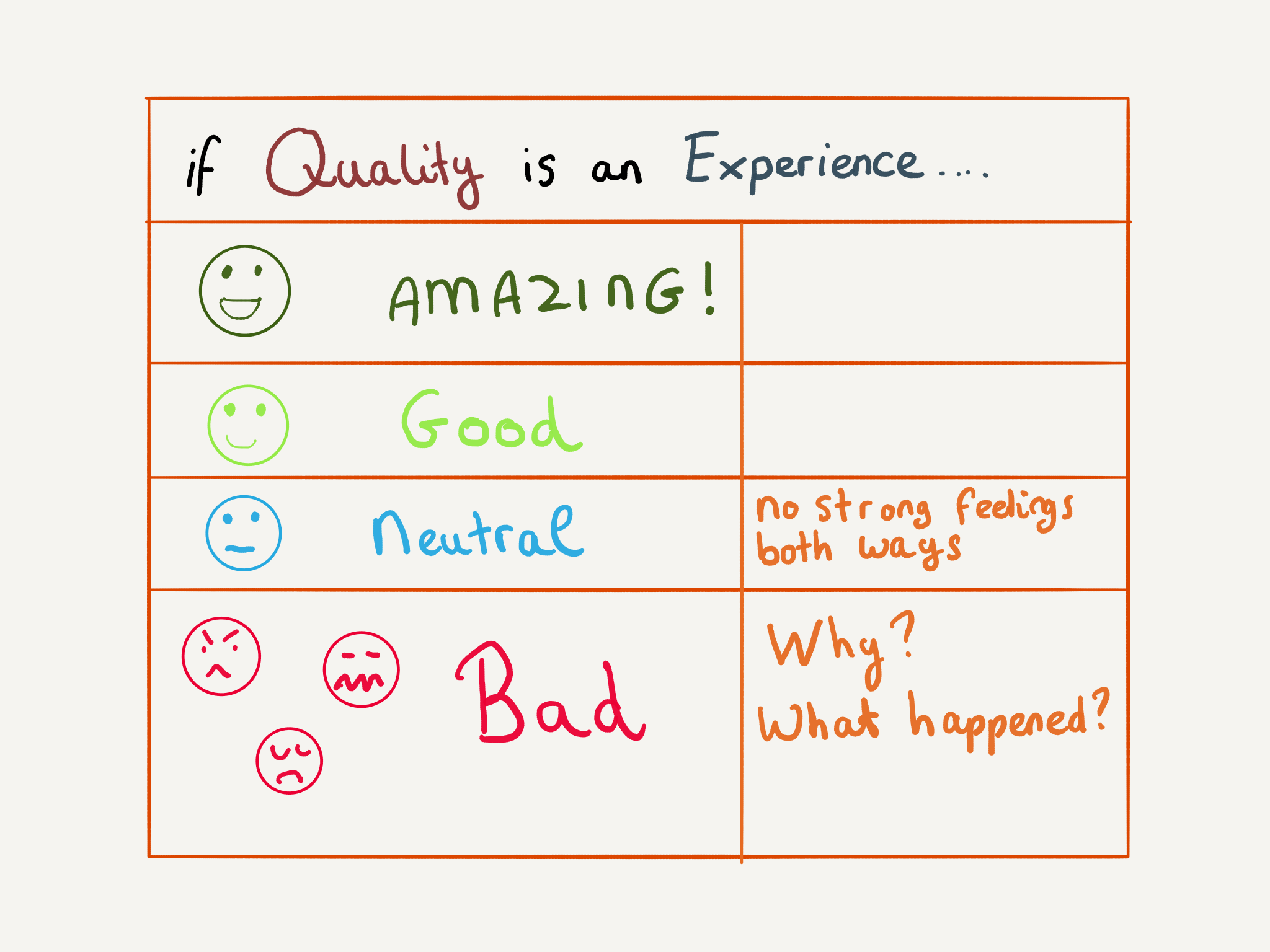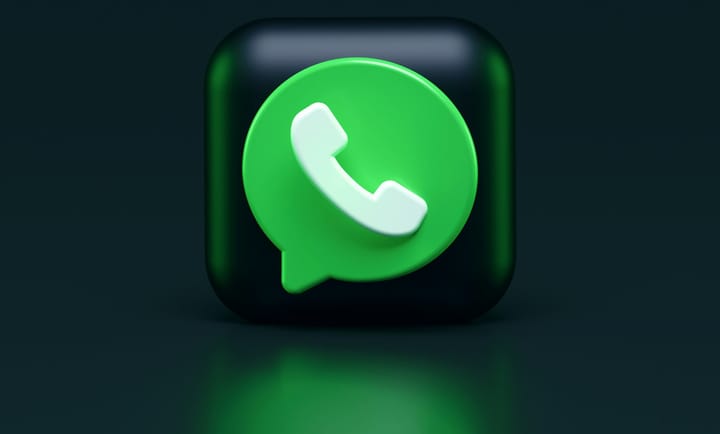Neutral Quality: a meme, or is it more than that?
What do I mean with the term "neutral quality"? Read all about it here!

It all started in 2021. I had yet another discussion with my team about quality, and one team member was saying things like "we have to bake quality in", as if it's that simple. I personally feel that quality is in the eye of the beholder. Quality is about perception and will be different for each person. It's also hard to quantify or break down into tiny little bits.
That hasn't stopped the testing community from trying! We have a nice assortment of quality attributes to focus on. You won't hear me say that these attributes aren't useful, but excuse the philosopher in me coming out to play and ask: if you have all the separate attributes covered, does it follow that quality as a whole is also good?
You can have software that's fast, has a clear UI and so on, but doesn't fulfill the users' needs. The situation I experienced in 2021 was a bit like this. We didn't have all the quality attributes covered, but a lot of them. In the end it didn't matter, as we ran into an internal company conflict and the software we had spent a full year on was tossed in the bin. That wasn't a quality experience for me, work wise, to put it mildly.
Before we knew that our efforts to produce high quality software were to be tossed in the bin, I drew this in response to the many discussions about quality we had:

I showed it to the team, and the initial reaction was that everyone chuckled.
"Neutral quality?! Who says that 😂"
It instantly became a meme in my team, and every time we spoke about something relating to quality, my drawing would be referenced.
"We gotta make sure it's neutral quality!"
"Oh, this backend service is really slow today, that ain't neutral quality!".
The unintended side effect of the drawing was that it relaxed our discussions about quality. Even though my team initially laughed, they did understand my point.
What is the point? Well, the discourse around quality is often focused on "good quality" or even "amazing quality", wowing the users, etc. However, when I use software, I only want to reach a goal, preferably in a smooth and quick manner. I don't want the software to be in my way, I want a neutral experience.
I don't want strong feelings either way. I don't expect software to generate all sorts of happy and fuzzy feelings inside, but I also don't want to be pissed off after interacting with it.
My argument for neutral quality counts for all software except games. In a game, I do want to be wowed and feel happy. It's an escape from reality, right? Better give me a good escape.
For all other software, I think even neutral quality is a high bar these days. Which apps and websites do you use that don't annoy you? Every website I visit tests my patience with cookie pop-ups, pop-ups to sign-up for the newsletter, ads, flashing UI elements, dark patterns. The 2024 addition to this list is that more and more apps and websites push me to use their "AI" bullshit that I don't want and didn't ask for.
I'm sure companies who do this have internal discussions about quality, but these days marketing departments are the boss of all of us. They only care about "number go up".
In essence, what I'm saying is this: before we're even talking about good quality, can we please reach neutral quality first? This is already a high bar for most software.
What do you think, is the term neutral quality a meme or is there merit in it? Let me know in the comments!
Bonus: Examples of apps/websites that I think are of neutral quality
- Obsidian. A perfect example of software that's not in the way. It lets me organize my notes efficiently. The UI is very basic, but the app can do more when you install extensions. You can choose to use these, or not.
- Alfred. I use this app to automate some text-based workflows. MacOS doesn't come with a clipboard manager built-in, so I use Alfred for that too. You can do way more with it, but my basic use cases already made the purchase worth it.
- DaVinci Resolve. A professional video-editing tool. I probably use 1% of its capabilities. They have made it free for n00bs such as myself. When you need the capabilities that are paid, you can buy a license. A one time purchase, so rare these days.
- Blackmagic Camera. An iOS app that I use to have more control over video capture. It's from the same company as DaVinci Resolve, and it's free as well! No hidden bullshit, it's actually free.
The thing that connects these apps is that there are no dark patterns being used. No ads, either. Obsidian requires a subscription if you use it for work, but that's being made clear from the start. Alfred also requires a one-time purchase for the license. DaVinci Resolve and Blackmagic Camera are free because the company makes money selling hardware to video professionals, and they can afford to offer their software for free. I'm quite sure it's a conversion driver because the software is so good that it garners trust in the other products of the company.
Books about concepts that are not explicitly mentioned in this article, but have influenced my thinking around quality
I Am a Strange Loop, by Douglas Hofstadter

At the start of this article, I wrote: "if you have all the separate [quality] attributes covered, does it guarantee that quality as a whole is also good?". This thought comes from reading this book, and is known as Theseus's Paradox.
Zen and the Art of Motorcycle Maintenance, by Robert M. Pirsig.

The author of this book tries to define quality, and my god, does it seem complex. Do you know get why I'm so scared of going deep into this topic? Not to mention that everyone has very strong opinions about quality, and the discussion often quickly devolves into utter nonsense. This is not an easy book to read, but worth it.



Comments ()